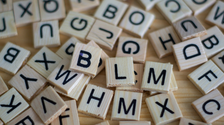Hello there! Thank you for visiting this page. I am going to assume that you are here because you have some interest in learning Chinese Mandarin, but you are not exactly sure how to get started. Learning a new language can be overwhelming. So, I hope this beginner-friendly guide will help you with that first step of your Chinese Mandarin journey.
Please always keep in mind that these are my own opinions and they might even change as I gain more experience teaching. I am always open to new suggestions and ways to improve my teaching. Now, let’s get started with our little tour!
Please also note that I will not go into too many details in each section because I don’t want to scare you away before you even get started. So, I will do my best to keep this fun, yet informative!
One of the most exciting aspects about learning a language is being able to speak it! I love getting to know people and their stories. When I was little, I’d mumble in random syllables while pretending that I was speaking in a different language. Of course, that was a gibberish language, and even I didn’t understand what I had said.
Chinese Mandarin has a fixed sound system, so once you master the basic sounds, you will be able to pronounce anything and everything in Mandarin! You won’t have moments where you think, “is this how you pronounce this word?”
Sound: Pinyin 拼音
Pinyin literally means “to spell sound.” It is a phonetic system written with the Latin alphabet. The one thing you might want to keep in mind is that although it is written with the Latin alphabet, the letters have their own pronunciation in Mandarin. Being that we are talking about pinyin, we can’t forget its buddy: tones!
Chinese Mandarin has four main tones and one neutral tone (which is also known as the fifth tone). We use accent marks to indicate the tones. Sometimes your teacher might use numbers instead for easier typing.

If you apply the wrong tone to the same sound, you might be saying something completely different. And depending on who you are talking to, you might either embarrass yourself (get a shovel ready so we can dig a hole at anytime to hide in) or get a laugh out of it! I always suggest the second reaction, because it makes language learning much more fun.
Let’s have a mini lesson:

We have three different characters here. However, they all share the same basic sound, which is ma. The key difference is that we are applying different tones. For example, 妈 is pronounced with the first tone, which is mā. It means “mom.” If we pronounce ma with the third tone, we will end up with “horse.” So, mispronouncing the tones might lead to a misunderstanding such as the following:

If you are a lawyer, you might turn the victim into a perpetrator! A lost case right there.
Importance of Characters
While pinyin will give you a great start for learning to speak Chinese Mandarin, you don’t want to rely on pinyin too much if you want to have a smooth transition from pinyin to characters. Don’t get me wrong, you can definitely reach a conversational level with pinyin alone. It is just that learning characters early makes it much easier to advance your Chinese Mandarin, especially if you plan on reaching a higher level of fluency and want to engage with the full beauty of the language. Oh, and one more thing: characters are fun!
Furthermore, if we only know pinyin, it will be difficult to advance because Chinese has a lot of homophones, which means that a word may have the same sound but different characters. Those characters have different meanings. Imagine having to read something like this:

It is very unlikely that you will encounter a conversation like this, but hey, you never know. If you learn multiple characters with the same si or shi sound, you won’t know which one is being used. After all, pinyin is just a sound system. We use characters for reading and writing.
A Tip for Speaking
One really cool feature of Chinese Mandarin is that each character represents one sound (or one syllable). So, that means that if you hear three syllables, then right off the bat you know that there are three characters being used! Thus, if you are practicing dictation and you wrote down two characters even though you heard three syllables, then you know that you missed one character. Time to put up a flyer titled “LOST CHARACTER!”
Mini Lesson: 加油!
It is time for a mini lesson. I want to teach you my favorite phrase in Chinese Mandarin, which is 加油. It is a term for encouragement, but I don’t have a perfect translation for it. The closest translation is, “you can do it!” However, I prefer the Chinese version much more.

Characters
So, now that we have the introduction to sound covered, we are ready for characters! However, I am not going to discuss them here. Hey, I need to leave you with a little bit of cliffhanger, you know (Cough).
Hint: It will be coming soon and it will be SUPER FUN!
Image Sources
- Hero Image by Mark Walker (CC BY-SA 2.0)
- All other images by the author







